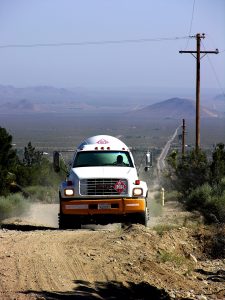Winter is a perfect time to think about renovations that bring coziness and warmth to your home. For homeowners who live off the natural gas line, propane is an earth-friendly option that can reliably and efficiently deliver warmer air all season long. When homeowners upgrade to propane during a remodel, they transform a dream home to include comfort and performance with high-efficiency appliances that have low-carbon footprints. Not only do families stay warmer with propane, they can feel better doing so because it’s clean energy.
10 Winter Safety Tips for a Propane-Fueled Home
If your home uses propane to generate heat or run appliances, there are some simple steps you can take to help keep your family safe and avoid potential dangers this winter.
1. Make sure you have an adequate propane supply. Schedule regular winter visits with your propane supplier so you always have an adequate supply in your tank.
2. Mark the location of your tank with a flag, pole or stake. Ensure it is higher than the average snow cover depth for your location. These markers can help you avoid plowing or shoveling rooftop snow on top of your tank. Should your tank become covered with snow, use a broom to clear it.
3. Make sure your heating system and appliances are running efficiently. Before the start of each heating season, have a qualified service technician inspect and service your appliances and propane system. This can help ensure your appliances are running as efficiently as possible.
4. Create an emergency preparedness plan and review it with everyone in your family. Post a list with contact information for your propane supplier and emergency services along with instructions for turning off propane, electricity and water. If you need to turn off your propane, contact a service technician to inspect your propane system prior to turning it back on.
5. Prepare a family disaster supply kit. Include several days’ worth of water and canned foods, along with a can opener, extra clothes, blankets, flashlights and batteries. Also include a battery-powered weather radio so you can stay informed as conditions change.
6. Check your chimneys, flue pipes, vent connectors and propane tank for damage, blockage or debris caused by snow and ice. Use a broom rather than a shovel and clear these areas frequently to help reduce the possibility of carbon monoxide poisoning.
7. Consider installing UL-listed propane gas detectors and carbon monoxide detectors. These detectors can provide you and your family with an additional measure of security. Be sure to follow the manufacturer’s instructions regarding installation, location and maintenance.
8. After a storm passes and it is safe to do so, check the entire area for downed power lines, damaged gas lines or damage to your propane tank. Immediately call your local utility company or propane supplier if any of these hazards exist. Do not attempt repairs yourself.
9. Never use a stove for space heating and never use outdoor propane appliances indoors or in enclosed areas, particularly in the event of a power outage. Proper ventilation is necessary for safe operation, and the carbon monoxide fumes can be lethal. Only use appliances indoors that are designed and approved for indoor use. Never store, place or use a propane cylinder indoors or in an enclosed area.
10. Conserve energy. Keep thermostats at 65 F during the day and 55 F at night, and close off any rooms that don’t need to be heated.




